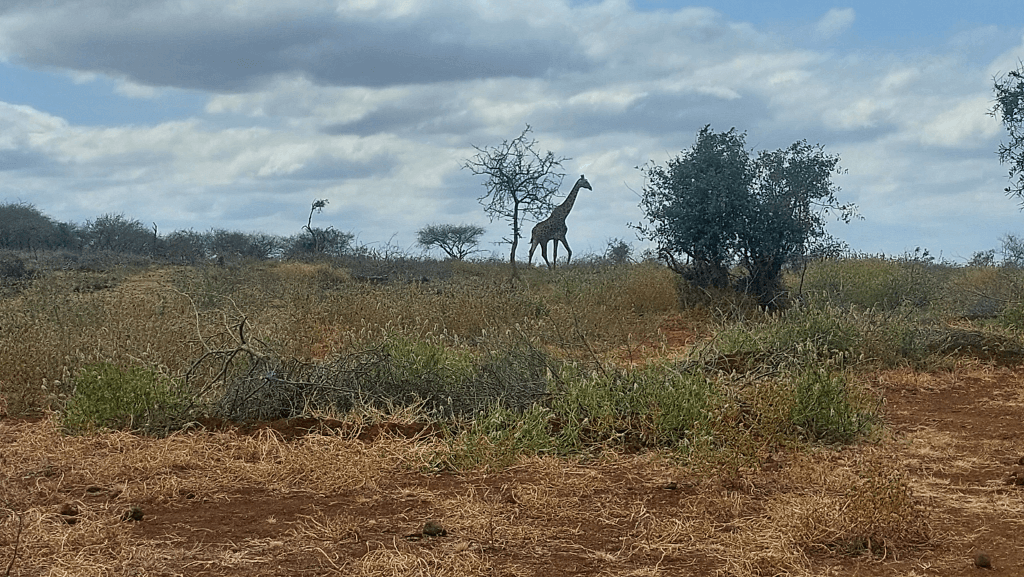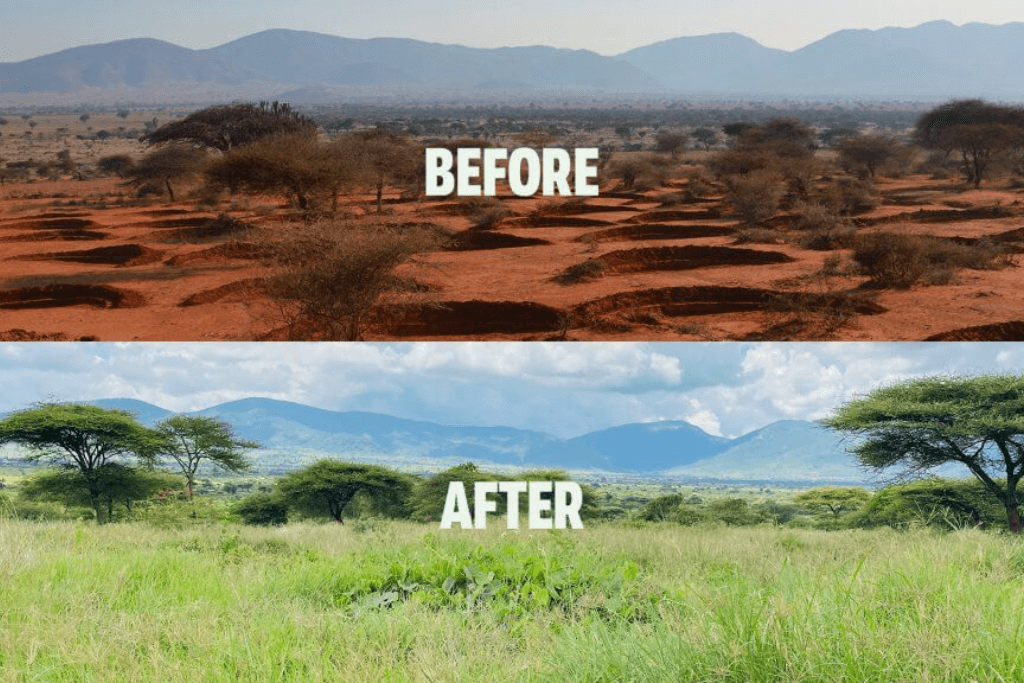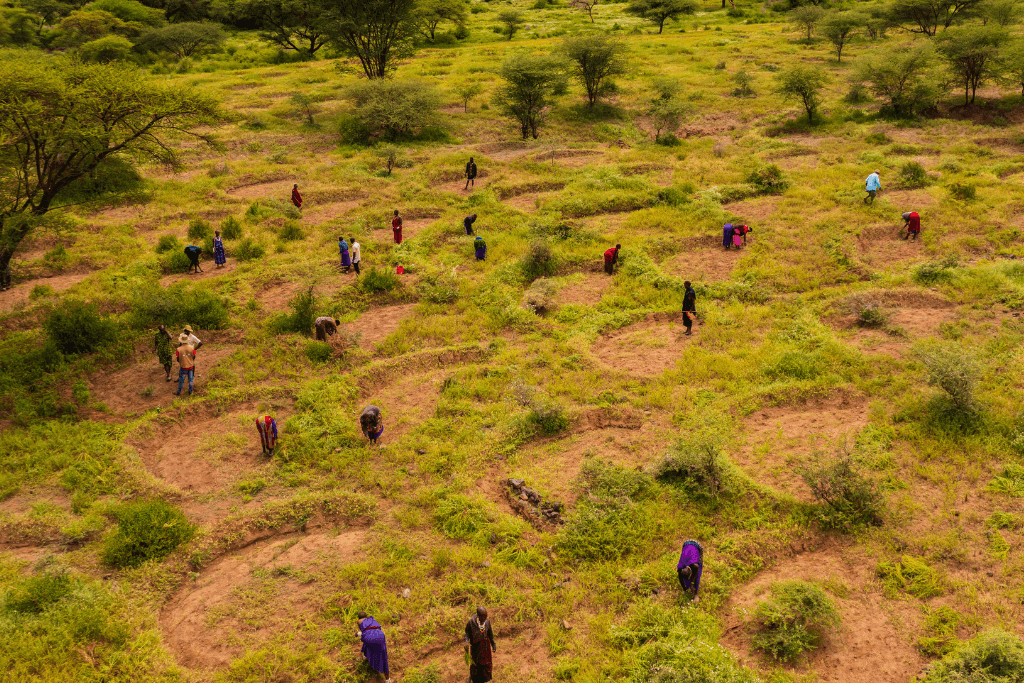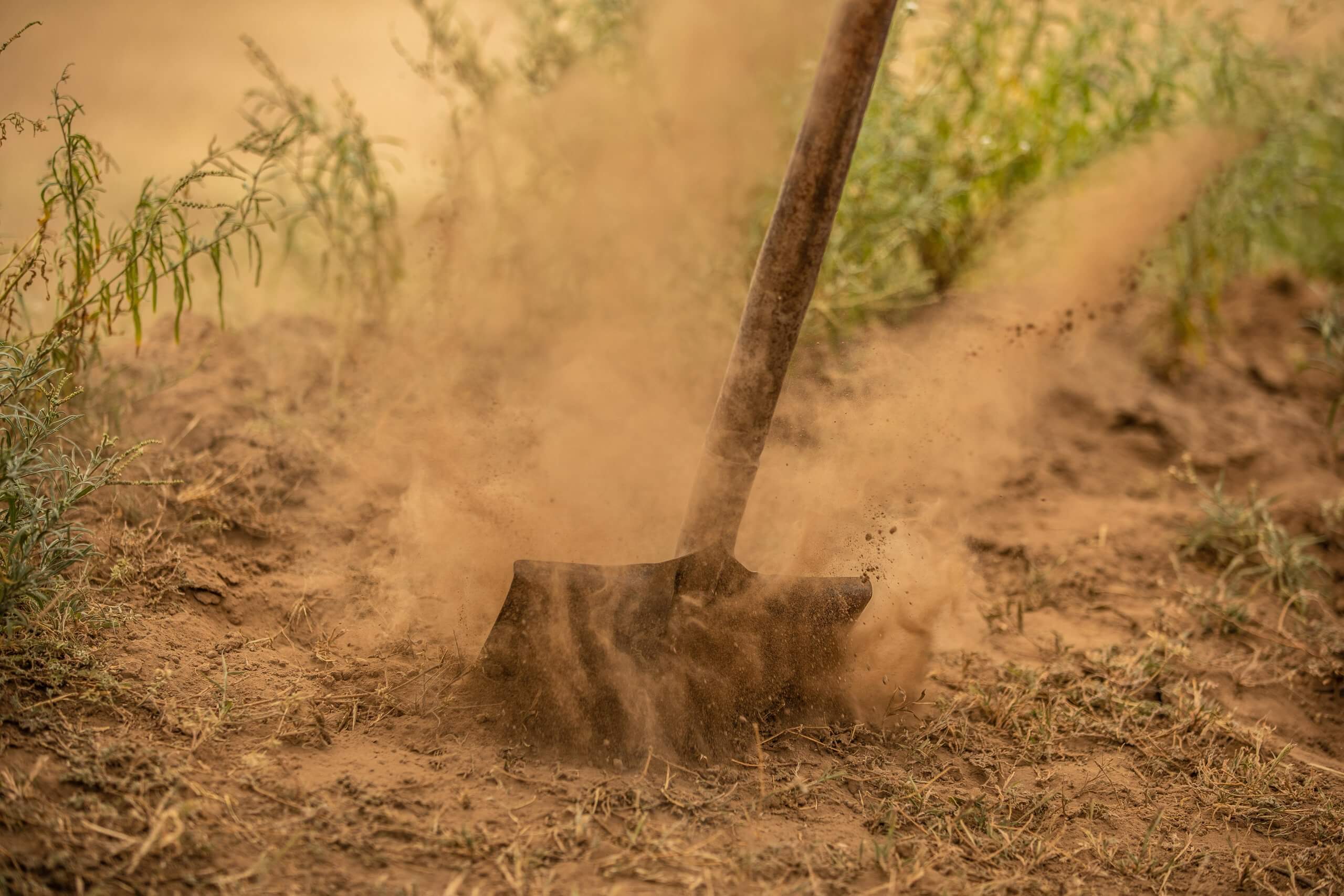Langata – August 2024
Langata Bund Site: An update from the field…
Over 20k new bunds
Regreening is done together! In the past six months, the community living on and around the Langata bund site has once again demonstrated the truth of this statement. Together, they worked hard at transforming their land for the better. Since early February 2024, multiple bund digging sessions commenced, whereby 122 community members joined forces to dig half-moon bunds on their farmlands. This mixed group consisted of 100 people who joined as diggers, carefully selected by the community itself and trained by 22 experienced supervisors, whereby vulnerable households were prioritised.
The spectacular collaborative effort of the Langata community has not been in vain: in the end, they have established an impressive 22,637 new bunds, eagerly awaiting for rains to come.
The weather report
As you can imagine, successful results of rainwater harvesting techniques such as bunds depend on the amount of rainfall in the area. Water causes the seeds in the bunds to germinate, resulting in the return of perennial grasses and other vegetation.
The Langata bund site received some rain for about a week during the March/April rains. Annual grasses and some weeds sprouted in the bunds that were constructed before these rains. Naturally, things dried up again at the end of the rainy season. The bunds constructed after this rainy season have no grass germination yet, but we expect more germination between October and December when the next rainy season starts.
Wildlife returns!
Humans aren’t the only beneficiaries of these recovering ecosystems – animals love healthier soils and greener surroundings too! An incredible positive result of the abovementioned regreening efforts in Rombo is increased grazer and wildlife sightings. As you can see, giraffes follow other grazers as they are social animals and find their way back to the area. Zebras are increasingly joining their long-necked friends and are spotted frequently.
Since the young vegetation within the bunds is still vulnerable at this stage, we cover the bunds with twigs to prevent grazing by the wildlife on the sprouting grasses inside the bunds. This allows more growth and seeds to be dispersed (also) outside the bunds, allowing the area to recover to its former glory.
Grazing management
Due to lack of sufficient rains in the area, grazing pressure has been a challenge thus far this year. The grazing pressure occurred as a result of livestock grazing at the edges of the site. To counter this and prevent overgrazing, a pre-existing grazing committee comprised of community members enforces clear grazing rules in the area, allowing the vulnerable young grasses to grow. An essential part of the work of the grazing committee is engaging farmers and herders in the community and educating them on the importance of leaving the land to rest until vegetation is well established.
Note: the displayed number of hectares is an estimation, based on the project design. The actual number of hectares will be confirmed soon.






